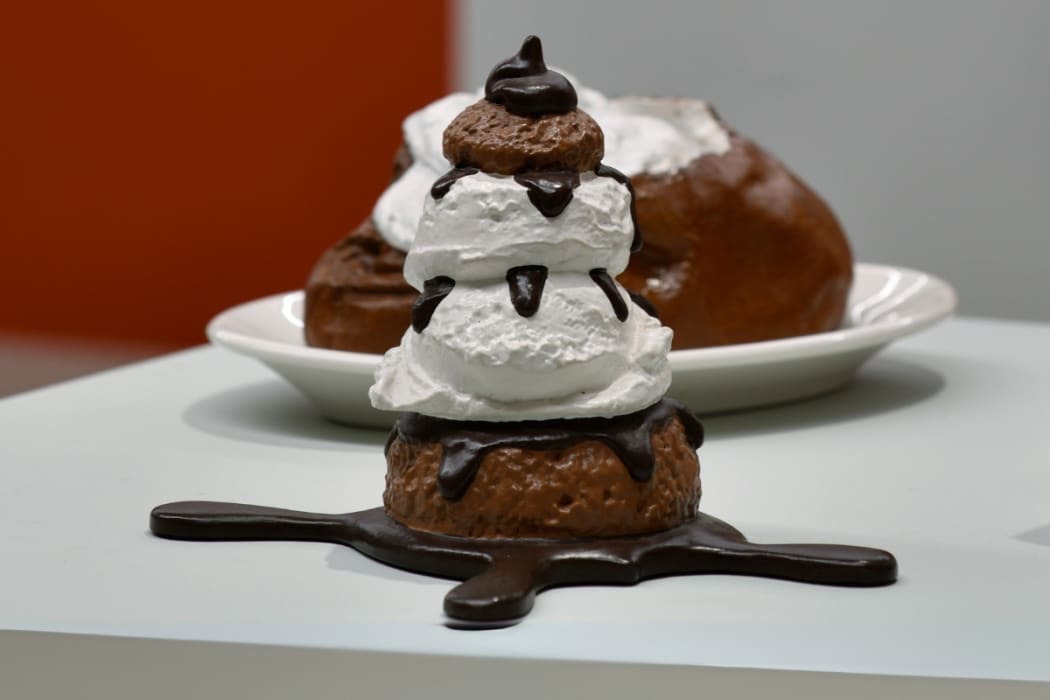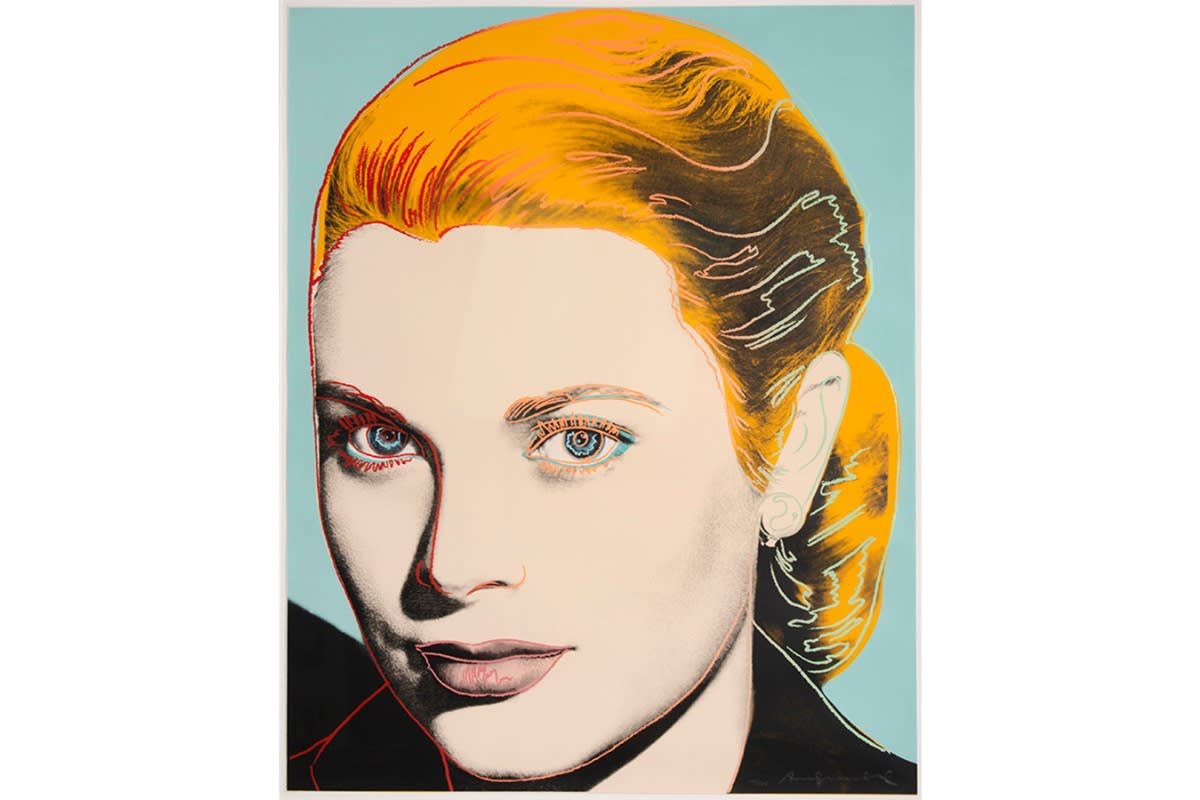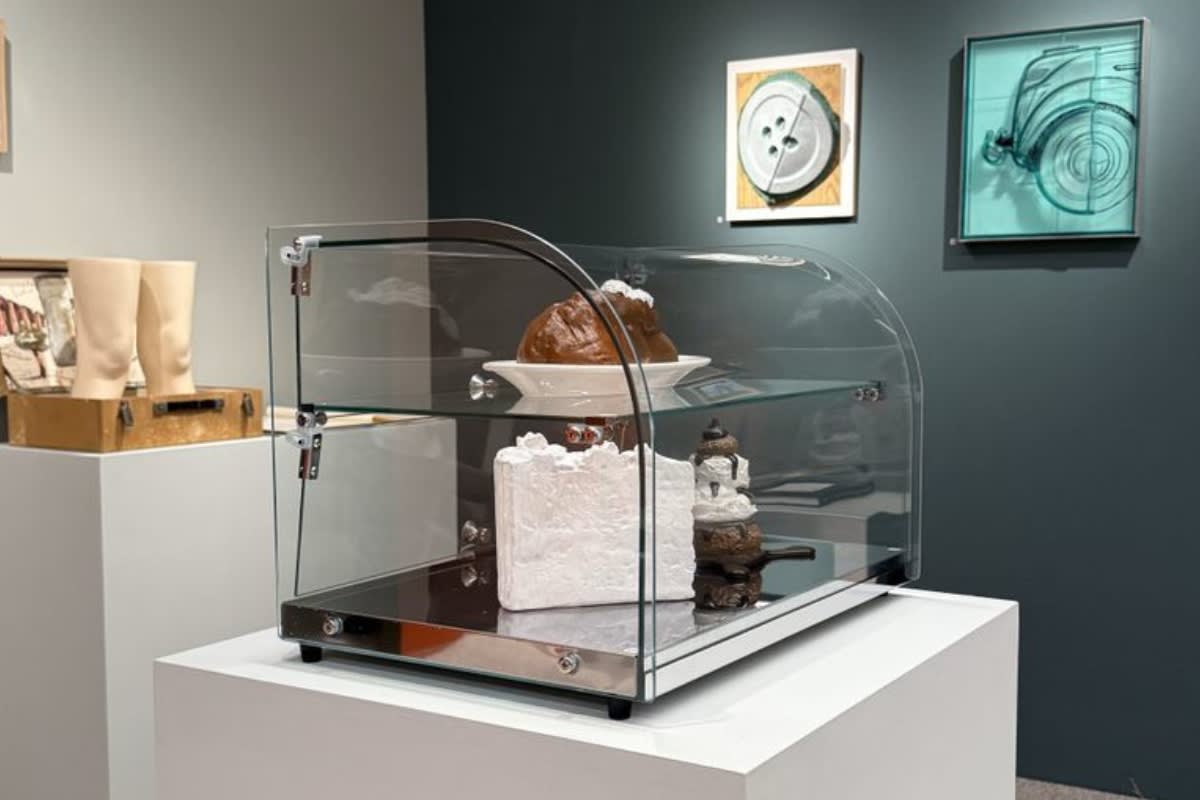


Robert Rauschenberg, Signs, 1970
Robert Rauschenberg (1925–2008) was instrumental in establishing Pop Art in the United States. His innovative ‘Combines’ fused painting and sculpture using discarded everyday objects, while his silkscreen paintings introduced mass media imagery into fine art. For instance, Signs (1970), which is available at Shapero Modern, depicts a collage of cultural events from the 1960s, reflecting Rauschenberg’s engagement with contemporary American culture.

Roy Lichtenstein, Foot and Hand, 1964
Rauschenberg laid the foundation for Pop Art, paving the way for a generation of artists, such as Roy Lichtenstein (1923–1997), whose use of parody and precision helped define the movement’s visual language. Drawing from old comic strips, Lichtenstein’s crisp, hard-edged compositions documented and playfully mocked consumer culture, elevating ‘lowbrow’ content into the realm of high art.

Andy Warhol, Grace Kelly, 1984
Andy Warhol (1929–1987) is perhaps the most recognised figure in Pop Art, renowned for blurring the lines between art and lifestyle. Rather than focusing on the irony that marked the work of his peers, Warhol embraced celebrity and consumerist culture. His portrait of Grace Kelly (1984), for example, serves as an homage to golden-age Hollywood glamour, transforming the actress into a graphic icon through vivid block colours.

Installation view | Claes Oldenburg: Multiples
The rise of Pop Art in the United States also led to the creation of immersive exhibitions during the 1960s. In particular, Claes Oldenburg (1929–2022) was known for his staged performance-based ‘Happenings’. In 1961, he opened The Store, a month-long installation in Manhattan’s Lower East Side, where he filled his studio with sculptures of consumer goods, eventually leading him to create small-scale, editioned sculptures, known as multiples.

Claes Oldenburg, Profiterole, 1989
On view at Shapero Modern’s Bond Street gallery until 29 June, Oldenburg’s Profiterole (1989) is a whimsical sculpture that inflates a French pastry into a hard, monumental form. The sculpture was part of Oldenburg’s ongoing exploration of food and form, blending humour with a tactile focus on texture and exaggerated scale.



